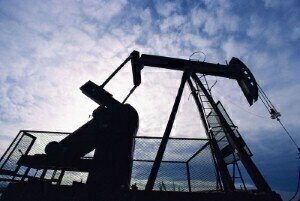Fuel for thought
What is the Difference between Primary, Secondary & Enhanced Recovery for Oil Extraction?
Aug 26 2014
Traditional methods of oil extraction have been the primary and secondary methods, which, according to studies by the US Department of Energy, only exhaust between a quarter and half of a well’s oil reserves. Such profligacy has been addressed by the development of a tertiary technique, more commonly known as enhanced oil recovery (EOR). But what is exactly are the differences between the three, and why are the first two so ineffective?
Primary Oil Recovery
Primary oil recovery refers to the process of extracting oil either via the natural rise of hydrocarbons to the surface of the earth or via pump jacks and other artificial lift devices. Since this technique only targets the oil, which is either susceptible to its release or accessible to the pump jack, this is very limited in its extraction potential. In fact, only around 5% - 15% of the well’s potential are recovered from the primary method.
Secondary Oil Recovery
This method involves the injection of gas or water, which will displace the oil, force it to move from its resting place and bring it to the surface. This is typically successful in targeting an additional 30% of the oil’s reserves, though the figure could be more or less depending on the oil and of the rock surrounding it.
Enhanced Oil Recovery
Rather than simply trying to force the oil out of the ground, as did the previous two methods, enhanced oil recovery seeks to alter its properties to make it more conducive to extraction. There are three main types of enhanced oil recovery:
- Thermal Recovery. This is the most prevalent type of EOR in the USA and works by heating the oil to reduce its viscosity and allowing easier flow to the surface. This is most commonly achieved by introducing steam into the reservoir, which will work to heat the oil. Less commonplace is the practice of burning part of the oil in order to heat the rest (fire flooding or in-situ burning).
- Gas Injection. Either natural gas, nitrogen or carbon dioxide (increasingly the most popular option) are injected into the reservoir to mix with the oil, making it more viscous, whilst simultaneously pushing the oil to the surface (similar to secondary oil recovery).
- Chemical Injection. The least common method of EOR, chemical injection works by freeing trapped oil in the well. This is done by lowering surface tension and increasing the efficiency of water-flooding.
As EOR becomes more popular and commonplace, advanced technology is required to continually assess and monitor the condition of the oil remaining in the weather. One such technological development is discussed in the article, Density Measurement for PVT Analysis and EOR Studies, which features machinery capable of analysing density, viscosity, phase behaviour and the fluctuations in the composition of the oil, among other things.
Digital Edition
PIN 26.1 Feb/Mar 2025
March 2025
Analytical Instrumentation - Elemental Analysis for Quality and Process Control at Refineries, for Lubricants and Wear Metals in Engine Oils - Synthetic Lubricants: New Developments - Scaling...
View all digital editions
Events
Apr 08 2025 Birmingham, UK
Apr 08 2025 Kielce, Poland
Apr 08 2025 Ravenna, Italy
Apr 08 2025 Southampton, UK
Apr 08 2025 London, UK



















